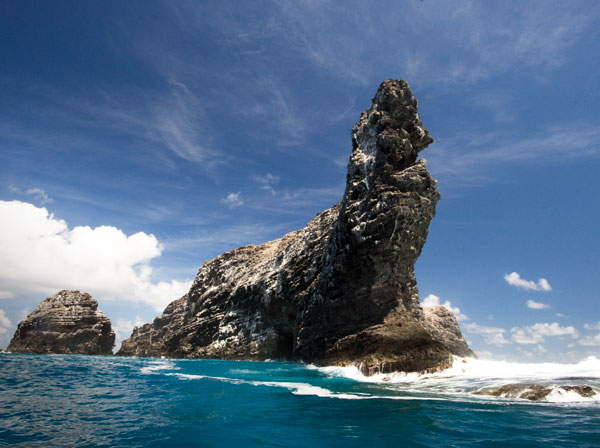You’ve likely committed a crime. From jaywalking to failure to pay traffic tickets, petty crimes are more common than we think. These usually just result in a fine—unlike those on the opposite end of the spectrum.
The most violent criminals have committed multiple heinous acts. So how does their punishment differ from the rest? Of course, there are different prisons with varying levels of security, and then there are the lengths of prison time they’re sentenced to.
The longest prison sentence in the world is over 160 life sentences—yet as you’ll find out on the map, there are far more incarcerated for many, many years.
View Longest prison sentences in a full screen map
Prisoners Serving More than 30 Life Sentences
As of December 2022, 269 prisoners around the world have been sentenced to one or more life sentences. Assuming a life sentence means a sentence that lasts until death… how are multiple life sentences possible? The actual definition of a life sentence isn’t so cut and dry.
Those convicted of the most heinous crimes can be sentenced to multiple life sentences, including the following 10 who are all serving more than 30 life sentences.
- Terry Nichols – 161 life sentences
- Michael J. Devlin – 74
- Abdullah Barghouti – 67
- Brenton Tarrant – 52
- Gary Ridgway – 49
- Loi Khac Nguyen – 49
- Martin Bryant – 35
- Billy Joe Godfrey – 35
- Nikolas Cruz – 34
- Warren Troy Knoop – 32
All 10 of the prisoners noted above are serving more than 30 life sentences, though Oklahoma City bomber Terry Nichols holds the record for the most consecutive life sentences ever given to a single individual.
In 1995, Nichols was convicted of 161 counts of first-degree murder, first-degree arson, and conspiracy at the state level along with terrorism and eight counts of involuntary manslaughter in federal court. He is imprisoned in Colorado’s ADX Florence.
Along with Nichols, five of the 10 prisoners with the longest life sentences are U.S.-based: Michael J. Devlin (kidnapper), Gary Ridgway (serial killer), Loi Khac Nguyen (surviving perpetrator of the 1991 Good Guys siege), Billy Joe Godfrey (child sexual abuser), and Nikolas Cruz (Parkland mass shooter).
Meanwhile, Abdullah Barghouti of Palestine, Brenton Tarrant of New Zealand, Martin Bryant of Australia, and Warren Troy Knoop of South Africa were also sentenced to multiple life imprisonments.
Check out the rest of the prisoners with multiple life sentences on the map before moving on to more about the prisons that hold these individuals.
The Most U.S. Prisoners in for Life Are Held Here
With 269 prisoners incarcerated for life around the world, many places are needed to hold them. Of these, 133 prisoners are held in the U.S. in around 80 different correctional facilities. The 12 U.S. prisons included in the following table house at least two prisoners in it for life:
| Prison | # of prisoners serving life sentences |
|---|---|
| ADX Florence | 10 |
| USP Terre Haute | 3 |
| WITSEC (Bureau of Prisons’ version of the Federal Witness Protection Program) | 2 |
| United States Penitentiary, Tucson | 2 |
| United States Medical Center for Federal Prisoners | 2 |
| Red Onion State Prison | 2 |
| Potosi Correctional Center | 2 |
| Oregon State Penitentiary | 2 |
| Mule Creek State Prison | 2 |
| Federal Medical Center, Butner | 2 |
| Dodge Correctional Institution | 2 |
| California State Prison, Corcoran | 2 |
We briefly mentioned ADX Florence before, in regards to housing Oklahoma City bomber Terry Nichols who is serving the most life sentences (161). Seeing as it’s also the facility of so many of these prisoners, let’s learn more about this Colorado supermax prison.
Officially the United States Penitentiary, Florence Administrative Maximum Facility, ADX Florence opened in 1994. As a supermax prison, it’s more secure than even maximum security facilities. This is because it’s technically a prison within a prison—or at least a unit within a prison.
ADX Florence is just one part of the Federal Correctional Complex, Florence (FCC Florence), which is situated on 49 acres of land and houses different facilities with varying degrees of security, including the United States Penitentiary, Florence High, where Richard Lee McNair is serving 2 life sentences. Yet while ADX Florence seems to be common for prisoners sentenced to life, it’s far from the only facility that houses them, as you can see on the map.
And for more on this topic, see our maps depicting if Education’s Influence on Incarceration or World Homicide Data Visualizes “Hot Spots.”






